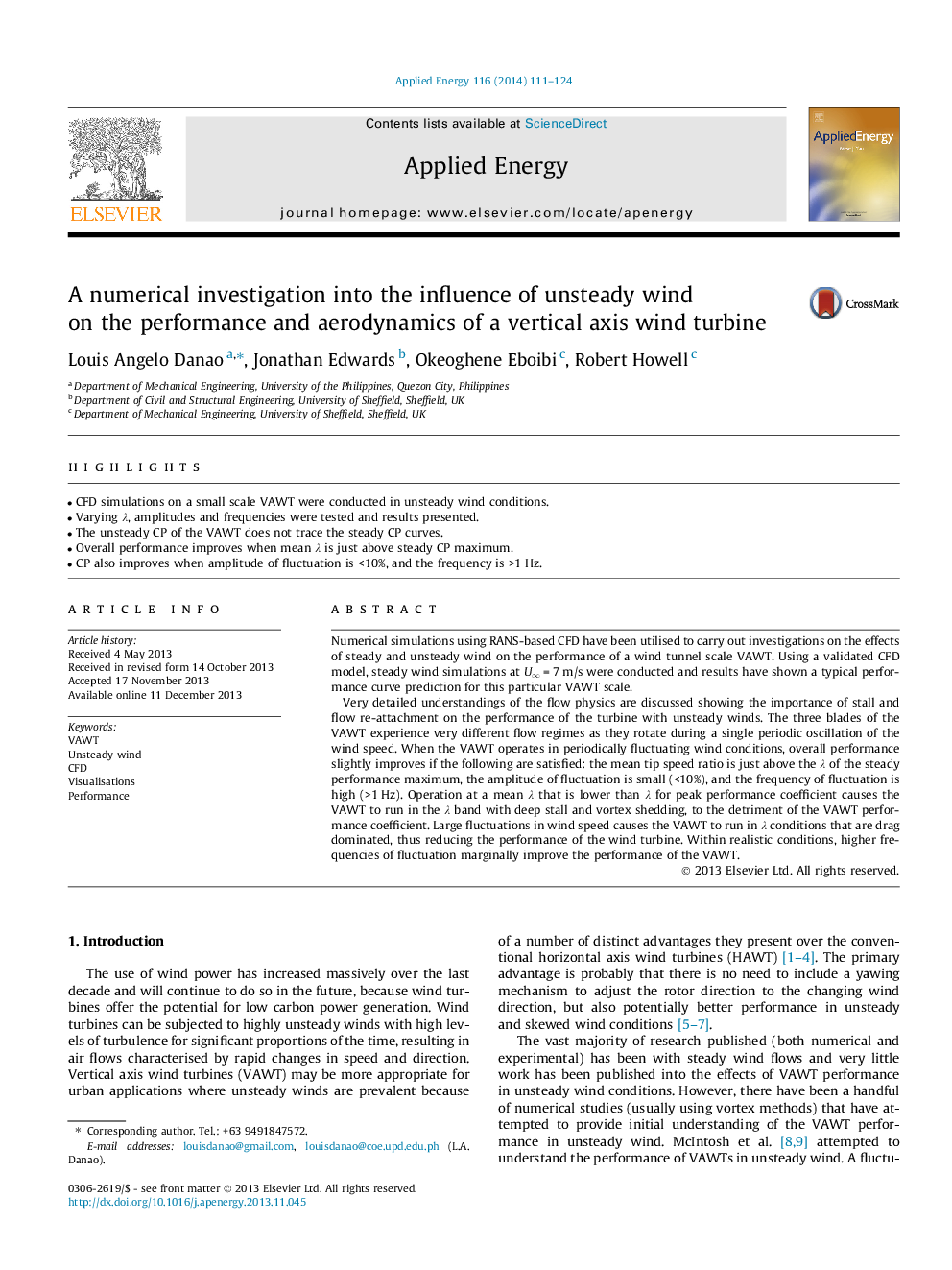| Article ID | Journal | Published Year | Pages | File Type |
|---|---|---|---|---|
| 6691169 | Applied Energy | 2014 | 14 Pages |
Abstract
Very detailed understandings of the flow physics are discussed showing the importance of stall and flow re-attachment on the performance of the turbine with unsteady winds. The three blades of the VAWT experience very different flow regimes as they rotate during a single periodic oscillation of the wind speed. When the VAWT operates in periodically fluctuating wind conditions, overall performance slightly improves if the following are satisfied: the mean tip speed ratio is just above the λ of the steady performance maximum, the amplitude of fluctuation is small (<10%), and the frequency of fluctuation is high (>1 Hz). Operation at a mean λ that is lower than λ for peak performance coefficient causes the VAWT to run in the λ band with deep stall and vortex shedding, to the detriment of the VAWT performance coefficient. Large fluctuations in wind speed causes the VAWT to run in λ conditions that are drag dominated, thus reducing the performance of the wind turbine. Within realistic conditions, higher frequencies of fluctuation marginally improve the performance of the VAWT.
Related Topics
Physical Sciences and Engineering
Energy
Energy Engineering and Power Technology
Authors
Louis Angelo Danao, Jonathan Edwards, Okeoghene Eboibi, Robert Howell,
